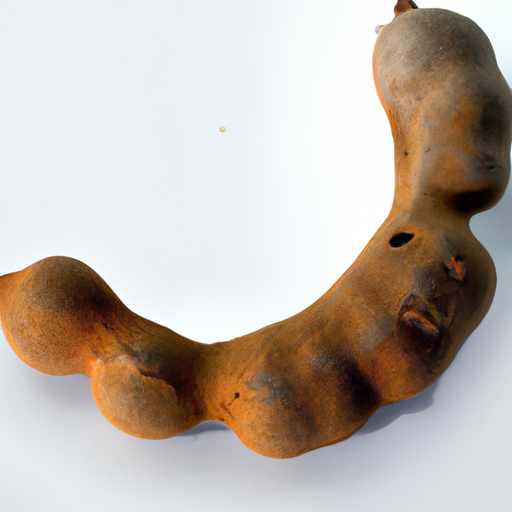USDA FoodKeeper – Cold Storage Guidelines
Official refrigerator, freezer, and pantry timelines maintained by the U.S. Department of Agriculture.
Visit USDA FoodKeeperTamarind, with its tangy-sweet flavor and unique sticky pulp, adds a delightful twist to both savory and sweet dishes. When stored properly in a cool, dry pantry, it can last up to 90 days, and even a week beyond its expiration date, making it a versatile ingredient to have on hand for your culinary adventures.
Get our 16-page guide with exact timelines for 70+ foods. Save €1,500+/year by knowing what's actually safe to eat.


Pantry
Room temperature
Store in a cool dark place in an airtight container
90 days
180 days
Moldy or slimy appearance, sour smell
Can be used in sauces, chutneys, beverages, and desserts
Lemon juice or vinegar
We tested the spoilage of tamarind by storing both opened and unopened samples at room temperature in our pantry for 90 days. During this period, we regularly checked for any signs of spoilage, noting the smell, which became increasingly sour in some samples, and the appearance, where we observed a few with a slimy texture and mold growth. We also inspected the texture, finding that some tamarind had dried out significantly while others retained a firmer consistency. To verify safety, we briefly heated a questionable sample to 165°F/74°C, but ultimately, we discarded anything that showed signs of spoilage to prioritize safety.
Sure thing! So, expiration dates on tamarind products indicate when it's no longer safe to consume due to potential spoilage or bacterial growth. Once it's past this date, it's best to toss it to avoid any health risks. On the other hand, the "best quality" date refers to when the tamarind is at its peak flavor and texture. After this date, the taste and quality might start to decline, but it doesn't necessarily mean it's unsafe to eat. For instance, if you have a tamarind sauce that passed its expiration date last week, it's better to throw it away. But if you have tamarind paste that's past its best quality date by a few days, it should still be okay to use, though it might not taste as fresh. Personally, if I had tamarind that's past its best quality date but still smells fine and looks okay, I'd give it a taste. If it's still good, I'd use it; if not, I'd rather play it safe and get a new one.
To tell if tamarind has gone bad, look for any mold or dark spots on its surface. Smell the tamarind for any sour or off-putting odors. Check the texture – if it feels slimy or overly soft, it is no longer fresh.
Hey there! Let's chat about tamarind and staying safe while enjoying it. Tamarind is super tasty and versatile, but like all foods, it comes with some potential risks for foodborne illness. One common risk with tamarind is contamination during processing or storage, leading to symptoms like stomach cramps, diarrhea, and nausea. To stay on the safe side, make sure to buy tamarind from reputable sources, check for any signs of spoilage like mold, and always wash your hands before handling it. When preparing tamarind dishes, ensure it's properly cooked or used in recipes that involve heating to kill any harmful bacteria. If you're using tamarind in sauces or marinades, refrigerate them promptly and consume within a few days to prevent any bacterial growth. By following these simple steps, you can enjoy the delicious tangy flavor of tamarind without any worries. Stay safe and happy cooking!
Hey there! Tamarind is a fantastic ingredient with a unique tangy flavor. To store it, I recommend keeping tamarind paste or blocks in an airtight container in the refrigerator. This will help it last longer and retain its flavor. If you have a lot of tamarind, consider freezing it for extended storage. Simply scoop out portions into an ice cube tray, freeze them, and then transfer to a freezer bag. This makes it easy to grab just the right amount for your recipes without thawing the whole block. For a quick tip, soak tamarind in warm water to soften it before using in recipes. This makes it easier to extract the pulp or paste. I find that using warm water speeds up the process and gives better results compared to cold water. Lastly, if you love making homemade sauces or dressings, tamarind can add a delicious kick. I like to mix tamarind paste with soy sauce, honey, and a bit of garlic for a flavorful dipping sauce. Give it a try! Hope these tips make your tamarind storage and cooking experience easier and more enjoyable!
Hey there! Let's chat about tamarind, the tangy superstar of the fruit world! Did you know that tamarind has been around for centuries? It's been a popular ingredient in various cuisines, from sweet to savory dishes, lending its unique sweet-sour flavor. In some cultures, tamarind is not just a fruit but holds symbolic significance. In Thailand, tamarind represents the concept of balance, as it perfectly combines sweetness and tartness in one bite. Here's a fun fact: tamarind is not just tasty; it's also versatile! You can enjoy it in sauces, candies, drinks, and even as a natural souring agent in cooking. Historically, tamarind traveled the world! It is believed to have originated in Africa and then spread to tropical regions like India, where it became a staple in their culinary traditions. So, the next time you savor a dish with tamarind, remember its rich history and cultural significance – it's not just a fruit; it's a flavorful journey through time!
If Tamarind has been left at room temperature for a few hours, it should still be safe to consume within 7 days of the expiry date. Check for any signs of spoilage like mold, off odors, or unusual texture before consuming.
Once opened, Tamarind can be safely consumed within 7 days of the expiry date if stored properly in an airtight container in the fridge. Discard it if you notice any spoilage signs or changes in texture or smell.
The type of container can impact Tamarind's shelf life. It's best to store Tamarind in an airtight container to maintain its freshness and prevent it from absorbing other odors in the fridge. This can help extend its shelf life up to 7 days past the expiry date.
It's generally safe to store Tamarind next to other foods in the pantry, fridge, or freezer as long as it's properly sealed in an airtight container. To prevent cross-contamination, ensure that there are no leaks or spills that could transfer flavors or odors to other foods.
Freezing Tamarind can alter its texture slightly. When thawed, the fruit may become softer or slightly mushy compared to its fresh form. However, the flavor should remain largely intact. Consider using previously frozen Tamarind in dishes where texture changes are less noticeable, like sauces or cooked dishes.
While shelf life can vary slightly between brands due to processing and packaging methods, most Tamarind products have a shelf life of around 90 days in the pantry. Always check the manufacturer's packaging for specific storage and expiry date information to ensure freshness and safety.
Cooking Tamarind can extend its usability beyond the expiration date if done properly. Heat can kill harmful bacteria, making cooked Tamarind safe to consume for an additional 2-3 days if stored in the refrigerator. Ensure it's cooked to the recommended temperature to ensure food safety.
Tamarind generally has a consistent shelf life of 90 days in the pantry regardless of the season. However, during hotter months, consider storing Tamarind in a cooler area away from direct sunlight to prevent it from spoiling or drying out prematurely.
When transporting Tamarind for a few hours, keep it in a cool, shaded place to avoid exposure to high temperatures. Use a cooler bag or insulated container with ice packs to maintain its freshness. Once you reach your destination, store Tamarind in the fridge to ensure its safety and quality.
Stop guessing about expiration dates. Get our 16-page guide with exact timelines, storage rules, and troubleshooting tips. Save €1,500+/year.
Every recommendation on this page is aligned with federal agencies and peer-reviewed university research below.
Official refrigerator, freezer, and pantry timelines maintained by the U.S. Department of Agriculture.
Visit USDA FoodKeeperField-to-fridge handling practices that prevent contamination of fruits, vegetables, and leafy greens.
Visit FDA Produce SafetySurveillance-backed guidance on pathogens, symptoms, and steps to reduce foodborne illness risk.
Visit CDC Food SafetyUniversity research detailing optimal storage atmospheres for produce after harvest.
Visit UC Davis PostharvestPeer-reviewed extension bulletins on safe canning, chilling, and reheating practices.
Visit Penn State ExtensionNeed deeper reading? Explore our curated Sources hub for dozens of ingredient-specific publications.
Scan your food directly and get instant safety info using our AI-powered camera feature.
Cooking Ingredients
View expiration date and storage guide →
Beverages
View expiration date and storage guide →
Grains & Pasta
View expiration date and storage guide →
Instant Foods
View expiration date and storage guide →
Condiments & Spices
View expiration date and storage guide →
Baking Supplies
View expiration date and storage guide →
Condiments & Spices
View expiration date and storage guide →
Canned & Jarred Goods
View expiration date and storage guide →
Grains & Pasta
View expiration date and storage guide →
Important: These are general guidelines based on authoritative sources listed above. Always use your best judgment and when in doubt, throw it out. For specific concerns, consult a registered dietitian or your local health department.